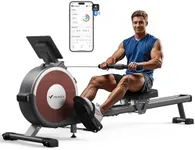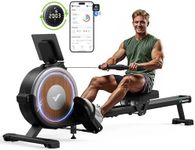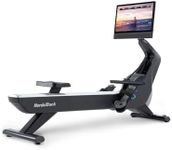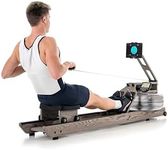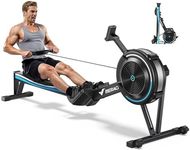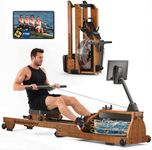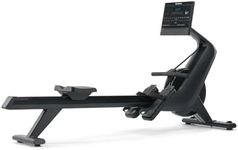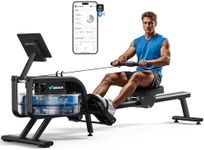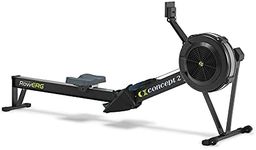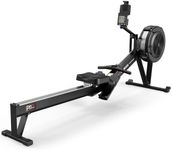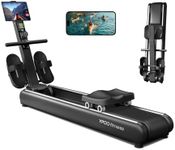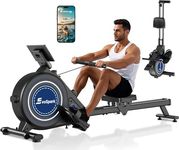Buying Guide for the Best Rowing Machines
Choosing the right rowing machine can significantly enhance your fitness routine by providing a full-body workout that improves cardiovascular health and strengthens muscles. When selecting a rowing machine, it's important to consider various specifications that align with your fitness goals, available space, and personal preferences. Understanding these key features will help you make an informed decision and ensure that the machine you choose is the best fit for your needs.Resistance TypeThe resistance type in a rowing machine determines how the machine simulates the feel of rowing on water. There are four main types: air, magnetic, water, and hydraulic. Air resistance offers a smooth, natural rowing experience and increases with your rowing intensity, making it ideal for those who want a more authentic rowing feel. Magnetic resistance is quieter and allows for adjustable resistance levels, which is great for those who prefer a quieter workout environment. Water resistance mimics the natural dynamics of rowing on water and provides a soothing sound, appealing to those who enjoy a realistic rowing experience. Hydraulic resistance is compact and often more affordable, suitable for those with limited space. Consider your preference for noise level, space, and the type of workout experience you desire when choosing the resistance type.
Size and StorageThe size and storage options of a rowing machine are crucial, especially if you have limited space. Rowing machines can vary significantly in size, with some models being foldable or having wheels for easy storage. If you have a dedicated workout space, a larger, non-foldable machine might be suitable. However, if space is a concern, look for a compact or foldable model that can be easily stored away when not in use. Measure your available space and consider how often you'll need to move or store the machine to find the best fit for your home.
Monitor and DisplayThe monitor and display on a rowing machine provide feedback on your workout, such as time, distance, speed, and calories burned. Some advanced models offer heart rate monitoring and connectivity to fitness apps. A basic monitor might suffice if you're just starting and want to track simple metrics. However, if you're more experienced or have specific fitness goals, a more advanced monitor with additional features can help you track your progress more effectively. Consider what metrics are important to you and how you plan to use this data in your fitness routine.
Weight CapacityThe weight capacity of a rowing machine indicates the maximum user weight it can safely support. This is important for ensuring the machine's durability and your safety during workouts. Most machines have a weight capacity ranging from 250 to 500 pounds. Choose a machine with a weight capacity that comfortably exceeds your current weight to ensure stability and longevity. If multiple people will be using the machine, consider the heaviest user when making your selection.
Comfort and AdjustabilityComfort and adjustability features, such as seat padding, handle grip, and footrest design, can greatly affect your rowing experience. A comfortable seat and ergonomic handle can prevent discomfort during longer sessions, while adjustable footrests accommodate different foot sizes and ensure proper rowing form. If you plan to use the machine frequently or for extended periods, prioritize models with these comfort features. Test different machines if possible to find one that feels comfortable and suits your body type.
